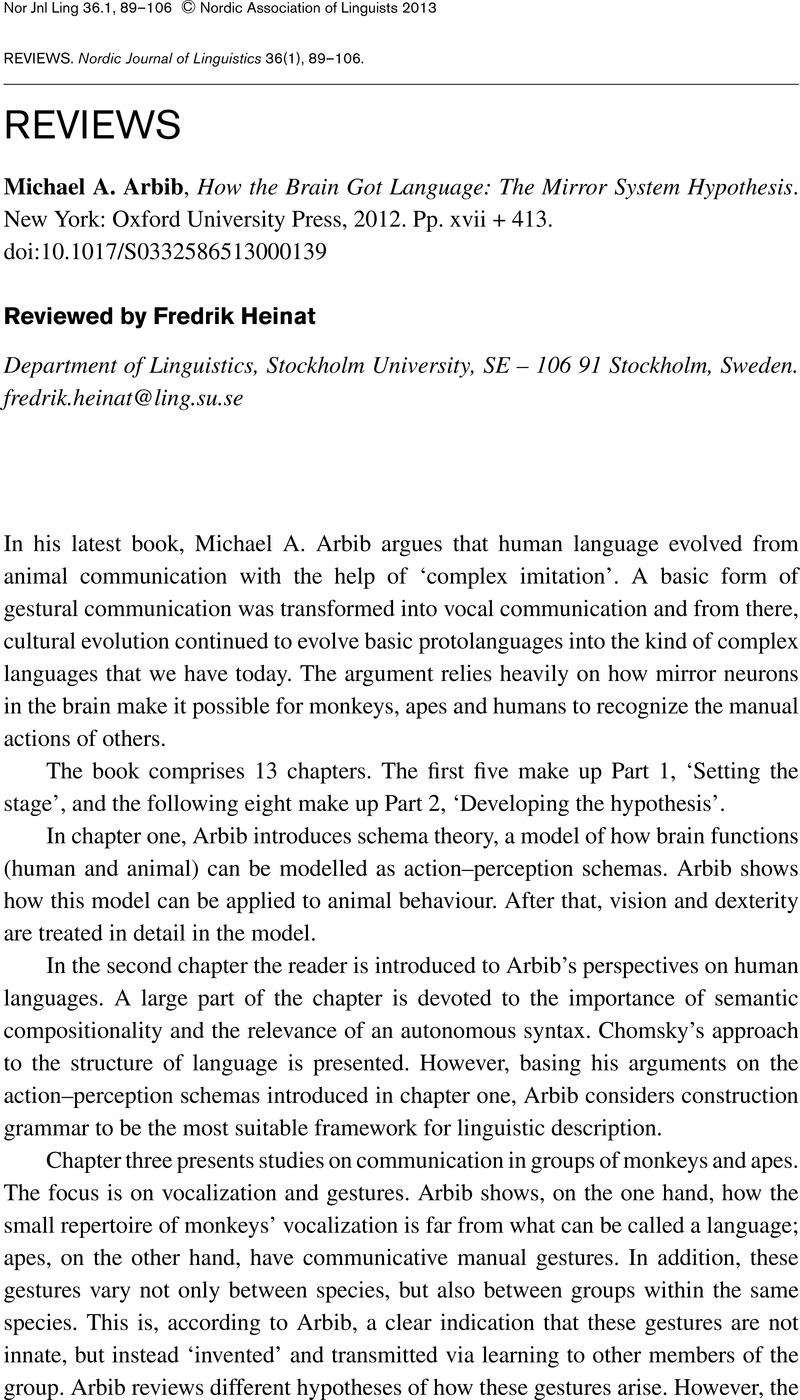No CrossRef data available.
Article contents
Michael A. Arbib, How the Brain Got Language: The Mirror System Hypothesis. New York: Oxford University Press, 2012. Pp. xvii + 413.
Published online by Cambridge University Press: 12 June 2013
Abstract
An abstract is not available for this content so a preview has been provided. Please use the Get access link above for information on how to access this content.

- Type
- Book Review
- Information
- Copyright
- Copyright © Nordic Association of Linguistics 2013
References
REFERENCES
Burling, Robbins. 2007. The Talking Ape: How Language Evolved. Oxford: Oxford University Press.Google Scholar
Bloom, Paul. 2000. How Children Learn the Meanings of Words. Cambridge, MA: MIT Press.CrossRefGoogle Scholar
Heine, Bernd & Kuteva, Tanja. 2007. The Genesis of Grammar: A Reconstruction. Oxford: Oxford University Press.CrossRefGoogle Scholar
Spelke, Elizabeth S. 1994. Initial knowledge: Six suggestions. Cognition 50, 443–447.CrossRefGoogle ScholarPubMed
Wray, Alison. 1998. Protolanguage as a holistic system for social interaction. Language and Communication 18, 47–67.CrossRefGoogle Scholar
Wray, Alison. 2000. Holistic utterances in protolanguage: The link from primates to humans. In Knight, Chris, Studdert-Kennedy, Michael & Hurford, James R. (eds.), The Evolutionary Emergence of Language: Social Function and the Origins of Linguistic Form, 285–302. Cambridge: Cambridge University Press.CrossRefGoogle Scholar




